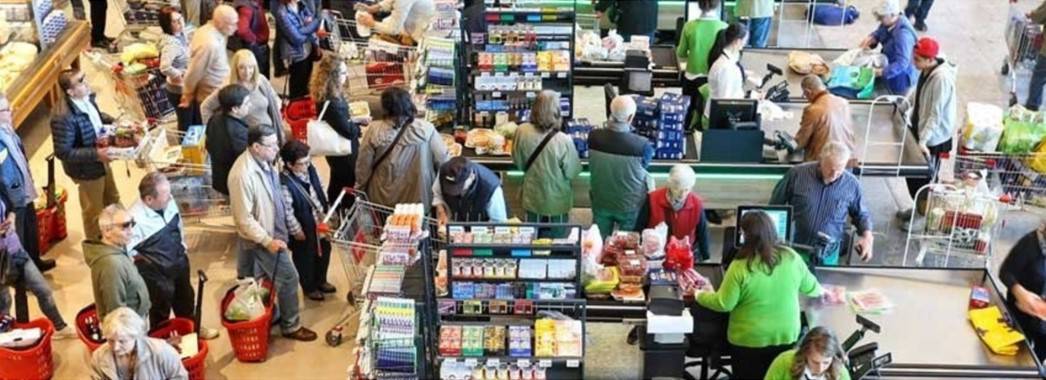Barren shelves: COVID-19 and panic buying of food │ Analysis by Michael Hauser
- From
-
Published on
24.03.20
- Impact Area

People rush to supermarkets and buy what they can carry. Comprehensible, but unnecessary.
To cut a long story short: COVID-19 has not affected the food availability in countries. Yet, when Ryan Buckley who prepares for field research with us at ICRISAT reaches his supermarket in the 19th arrondissement in Paris, he stands before barren shelves. Milk, bread, rice and tins of preserved foods – basic staples run out of stock. It looks like someone swept shelf contents into boxes and carried them away. Ryan sees people running up and down the corridors along the shelves, looking for eatable stuff. He spots a yoghurt and a bag of pasta, leftovers, overlooked by those who search for food to be stocked at home. Most of the remaining staples are either bio or “higher” quality foods. People rush to supermarkets preparing for a shutdown. Ryan witnesses panic buying – herd behavior, the human response to anticipated shortages of goods and services.
Forces at play
Strong interrelated forces drive people into supermarkets and let Ryan stand before empty shelves. Here are a few that matter.
- Trust – Trust of people in market institutions, the administration and the private sector influences herd behaviour. Mistrust spreads quickly in society, often develops versions of the truth and eventually rumours.
- Fear – Fear is an emotion, probably the most obvious driver of panic buying of food.
- Loss aversion – Humans tend to avoid future losses. Instable food prices, for example, or the anticipation of the same can prompt people to exhibit panic buying. Better buy now to minimise welfare losses.
- Short time horizons – During stress, humans exhibit behaviors with short time horizons. They would buy food now, even though today’s food purchase may be loss-making.
- Reputation – Individuals attributed with certain information advances – those who run first – often lead the crowd. These role models inspire, prompt and influence others.
Mediators
Several factors mediate the response of a group, community or society, city, district or a country to perceived food shortages.
- Food prices – People are sensitive to food prices. The more rapidly food prices of lead commodities increase – think of the basics such as wheat, meat or rice – the more likely people feel to lose out if they don’t purchase food in bulk while affordable. Sometimes consumers notice food price changes with a delay, but once they do, they respond at large.
- Purchasing power – The ability of consumers to afford food matters a lot for herd behaviour. Who leads the panic buying in a society? I’d argue the middle class and upper-class; not necessarily those with little income who can’t afford to stockpile foods anyways.
- Information – Access to accurate information about food logistics, supply chains and the ability of supermarkets to deliver sufficient foods in future (‚Our stocks are filled‘) help, especially when communicated early in the process (once the crowd moves it is too late).
So, what to do about panic buying the leaves shelves barren in supermarkets? Is there anything society and governments can do to reduce the likelihood of panic buying? Short answer, yes. Long answer, it’s not straightforward.
Read more on original post: http://gldc.cgiar.org/barren-shelves-covid-19-and-panic-buying-of-food/
Related news
-

ICRISAT to Deliver World-Class Services as CGIAR’s Breeding Resources South Asia Hub
International Crops Research Institute for the Semi-Arid Tropics (ICRISAT)07.07.25-
Biodiversity
-
Food security
Strategic collaboration to scale innovation and deliver harmonized, high-quality support across CGIA…
Read more -
-

Shaping policy changes for a sustainable cropping system in Uttar Pradesh, India
International Rice Research Institute (IRRI)03.07.25-
Food security
by Dr. Proloy Deb and Dr. Swatantra Dubey The Central Plain region of Uttar Pradesh…
Read more -
-

KOICA, UPLB, IRRI Partnership Establishes a Genomic Powerhouse to Future-Proof Agriculture
International Rice Research Institute (IRRI)01.07.25-
Food security
LOS BAÑOS, Philippines (26 June 2026) — KOICA, UPLB, and IRRI came together to showcase…
Read more -
